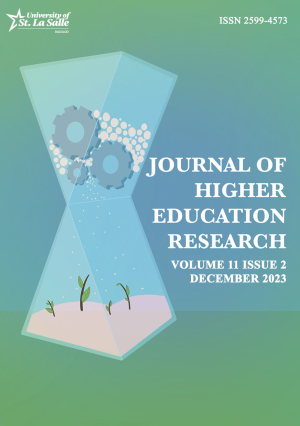Level of Effectiveness of the Simulation Tool-Modified (Set-M) Among Anesthesia Nurses
https://doi.org/10.70228/YJHER2024001
Cite this article Read this article
ABSTRACT
The COVID-19 pandemic posed a significant challenge to nurses' work, especially in training nurses in clinical skills. This study aimed to localize the Situational Simulation Teaching Effectiveness-Revised Scale and to determine how effective situational simulation is among anesthesia nurses. A descriptive correlation regression analysis design was used for the quantitative analysis method. The participants were 233 registered nurses working in a tertiary hospital in Henan Province, China. Data were collected using the Chinese version of the Contextual Simulation Teaching Effectiveness Scale-Revised questionnaire. Results showed that there was a significant difference in the level of effectiveness of the Simulation Tool-Modified (SET-M) in terms of learning when classified as sex. There was a significant difference in the level of effectiveness of the Simulation Tool-Modified (SET-M) in terms of confidence when classified by sex and work experience. There was a significant difference in the level of effectiveness of the Simulation Tool-Modified (SET-M) in terms of debriefing when classified as to educational background. The findings suggest that hospitals should provide training in contextual simulation teaching for anesthesia nurses to improve their clinical skills. It is recommended that hospitals, nurses, patients, and administrators promote situational simulation from different perspectives. The Situational Simulation Teaching Ability Training is further recommended to provide training for anesthesia nurses.
Keywords: situational simulation teaching, simulation tool-modified (SET-M), anesthesia nurses

Volume 11 Issue 2, 2023 EDITION
Published 2023
Editor's Note
Dear Readers, We are pleased to present the Volume 11, Issue 2 (2023) of the Journal of Higher Education Research. This issue brings together a diverse collection of studies that address significant topics in education, healthcare, and well-being, showcasing research that is both relevant and impactful. This issue includes studies that highlight the importance of psychosocial factors in learning and practice. Cao and Espinosa examine how parenting styles influence study engagement among vocational nursing students, with self-compassion potentially mediating this relationship. Meanwhile, Yanling and Garcia shed light on the factors contributing to death anxiety among ICU nurses, emphasizing the need for tailored mental health interventions to strengthen the self-efficacy of ICU nurses. Similarly, Xing and Lachica highlight the growing demand for death education, pointing on the necessity of preparing nursing students for end-of-life care. From the perspective of patient care, Wang and Dolendo investigate how the fear of movement, or kinesiophobia, physical exercise and self-efficacy affect patients undergoing peritoneal dialysis, showcasing its impact on the quality of life of the patients. Chen and Cadena evaluate the effectiveness of a modified simulation tool to improve the skills of anesthesia nurses, emphasizing the value of hands-on training in healthcare. Mental health is another key theme in this issue. Li and Diva share the lived experiences of patients using nonpharmacological approaches to manage anxiety and depression related to chronic gastritis. This study proposes a model to assist the patients in developing appropriate behavioral adaptations and self-management skills and assess the effectiveness of strategies. Yang and Chua identify predictors of blood pressure in hypertensive patients, contributing to better hypertension management program. Lastly, two studies explore ways to enhance quality of life. Shen and Garcia investigate how square dancing improves sleep and well-being among middle-aged and older women, highlighting the importance of community-based physical activities. Song and Lachica report findings on the role of meaning in life and coping styles in supporting breast cancer patients undergoing chemotherapy. We are deeply grateful to our authors for their valuable contributions and to our reviewers for their time and expertise in refining this issue. A special thanks to the staff and Dr. Lota Largavista, Director of the Publication and Engagement Office, for their unwavering support in producing this volume. We hope you find this issue thought-provoking and useful in your professional practice and academic endeavors. Sincerely, JOVAL N. MARTINEZ Editor-in-Chief


